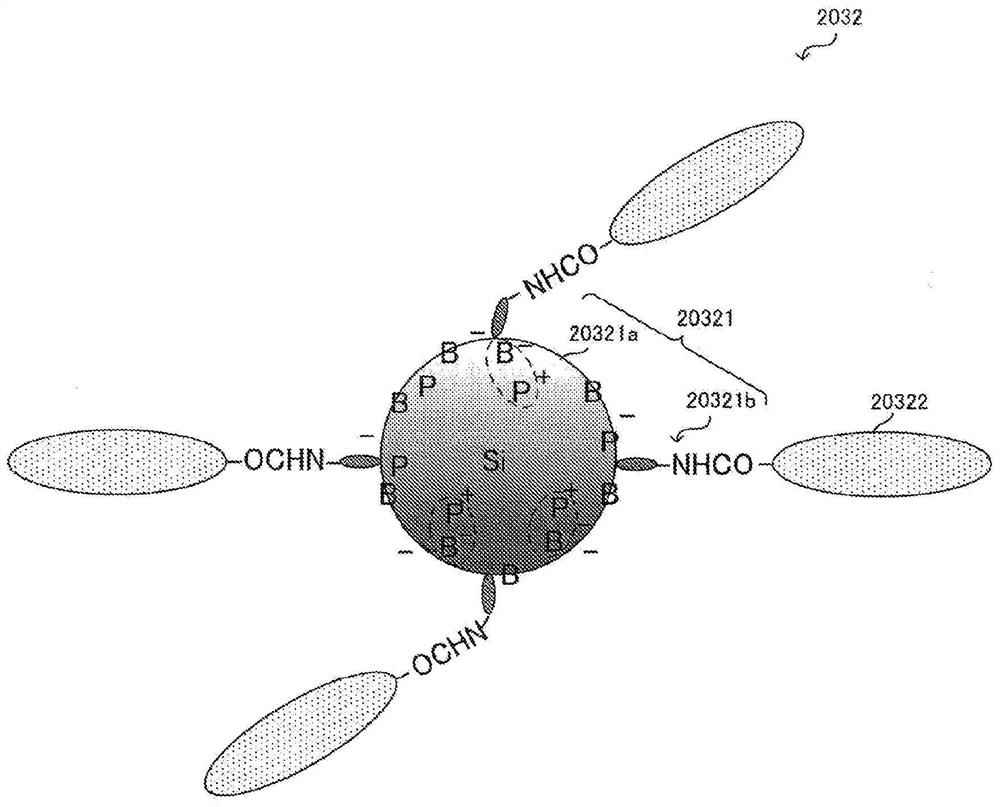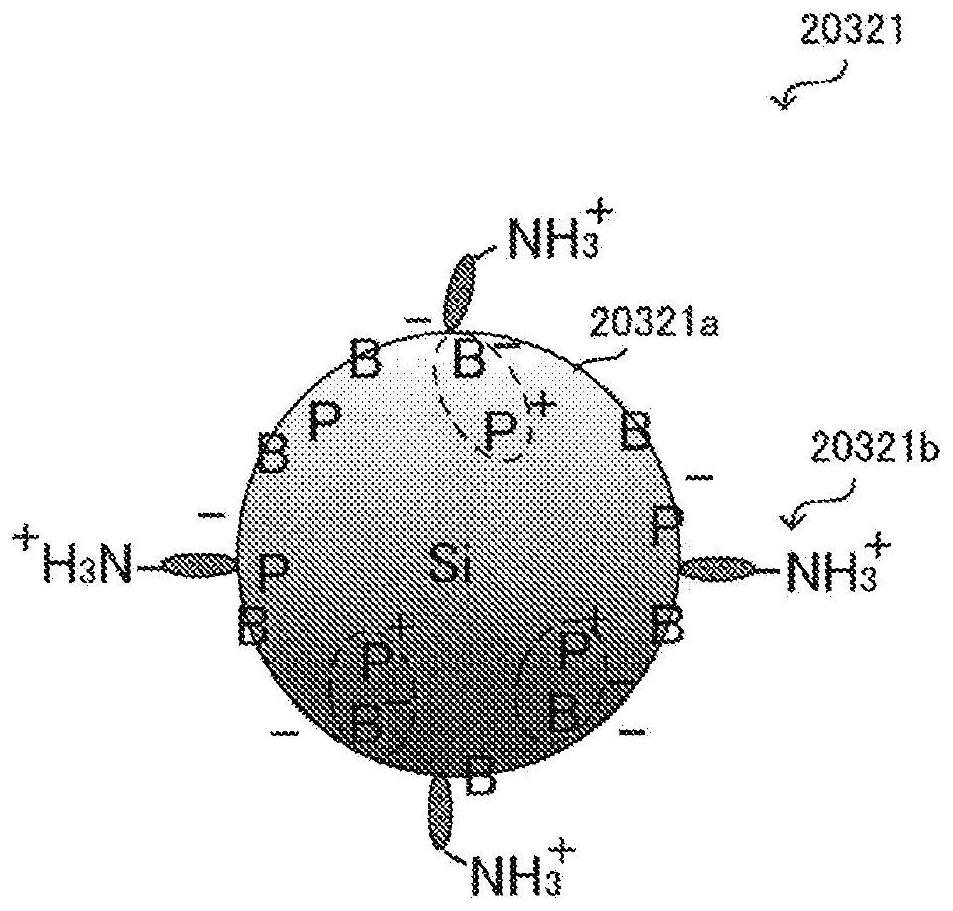Complex and detection device
A detection device and composite technology, applied in the field of composites, can solve the problems of easy fading, weak π bonds in chemical structure, etc., and achieve the effect of stable luminescence characteristics and good dispersion
- Summary
- Abstract
- Description
- Claims
- Application Information
AI Technical Summary
Problems solved by technology
Method used
Image
Examples
Embodiment approach 1
[0081] Hereinafter, the complex according to Embodiment 1 and a detection device using the complex will be described.
[0082] [Complex]
[0083] First, refer to Figure 1 ~ Figure 3 The complex according to Embodiment 1 will be specifically described. figure 1 It is a schematic configuration diagram showing an example of the configuration of the complex 2032 according to the first embodiment.
[0084] Such as figure 1 As shown, the complex 2032 includes a first substance 20322, a quantum dot 20321a, and a linking substance 20321b. The first substance 20322 has a property of being able to specifically bind to a target substance to be detected. Examples of target substances include proteins, lipids, sugars, and nucleic acids. Substances capable of specifically binding to a target substance include, for example, antibodies against antigens, enzymes against substrates or coenzymes, receptors for hormones, protein A or protein G against antibodies, and antibiotics against bio...
Embodiment 1~3
[0106] In the following examples, the compound (APDMES) represented by the above structural formula (2) was used as a linking substance. As shown in the above structural formula (2), APDMES has an amino group (-NH 2 base), and 1 silanol group. In addition, as quantum dots, silicon microparticles with a particle diameter of 3.9 nm doped with phosphorus and boron were used. In addition, DMT-MM was used as a substance that promotes the reaction between quantum dots and linking substances.
[0107] The surface-modified quantum dots involved in Examples 1 to 3 were mixed in such a way that the mixing ratio of the quantum dots and the linking substance became 1:125, 1:250, and 1:1250 (the number of quantum dots: the number of molecules of the linking substance), according to Figure 4 Fabrication method shown. Next, the surface-modified quantum dots in Examples 1 to 3 were respectively dispersed in water to prepare a dispersion (hereinafter referred to as an aqueous dispersion o...
Embodiment 4
[0120] according to Figure 5 In the production method shown, a complex in which the surface-modified quantum dots involved in Example 2 were bound to an IgG antibody was produced. The obtained complex was dispersed in phosphate-buffered saline (PBS: Phosphate Buffered Salts) to prepare a dispersion. The light transmittance of this dispersion liquid was measured by the same method as Examples 1-3. show the result in Figure 8 middle. Figure 8 It is a graph showing the measurement results of the light transmittance of the dispersion liquid of the complex according to Example 4. In addition, Reference Example 2 is a dispersion liquid in which the surface-modified quantum dots according to Example 2 are dispersed in PBS, and Reference Example 3 is a dispersion liquid in which IgG is dispersed in PBS.
[0121] Such as Figure 8 As shown, the light transmittance of the dispersion liquid of the complex according to Example 4 is almost equal to the light transmittance of the di...
PUM
| Property | Measurement | Unit |
|---|---|---|
| particle diameter | aaaaa | aaaaa |
Abstract
Description
Claims
Application Information
 Login to View More
Login to View More - R&D
- Intellectual Property
- Life Sciences
- Materials
- Tech Scout
- Unparalleled Data Quality
- Higher Quality Content
- 60% Fewer Hallucinations
Browse by: Latest US Patents, China's latest patents, Technical Efficacy Thesaurus, Application Domain, Technology Topic, Popular Technical Reports.
© 2025 PatSnap. All rights reserved.Legal|Privacy policy|Modern Slavery Act Transparency Statement|Sitemap|About US| Contact US: help@patsnap.com



